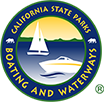The US Army Corps of Engineers and other government agencies are attempting to coordinate dredging, nourishment, flood control and habitat restoration projects in a cost-effective way. In particular, there is a significant amount of sediment that is dredged or needs to be removed from a particular location that could be transported to coastal sites within the State that are in need of sediment, especially eroded beaches in Southern and Central California. USACE analyses have been restricted to Corps projects, and benefit derived from the use of opportunistic sand may only be calculated if and when there is a Federal interest. Other state and local projects (e.g., emptying of debris basins, wetlands restorations) that generate opportunistic sediment are not be included in USACE studies.
CSMW conducted an economic study of regional sediment management (RSM) focused where information about opportunistic sediment and benefits from its use are well known. In particular, RSM issues in Ventura and southern Santa Barbara Counties associated with flood control projects, harbors, and beaches were examined; the report Economics of RSM in Ventura and Santa Barbara County presents our findings.
About the Report
The report examines the costs and benefits of using sediment from harbor maintenance and flood control projects to nourish sediment-depleted beaches. Typically, sediment obtained from these types of projects is disposed in the least expensive manner; e.g., dredge material is often placed on an adjacent or nearby beach while upland materials are often taken to landfills. As a case study on how sediment might be better utilized to improve California’s beaches, this report focuses on three potential sediment receiver sites in Santa Barbara and Ventura Counties (Carpinteria City and State beaches, Goleta County Beach, and Rincon Parkway beach). The report examines possible sources of sediment for these receiver sites (Santa Barbara, Ventura and Channel Islands harbors; various debris basins and dams). This study should only be considered preliminary.
Beach Nourishment
Placing dredged material in the nearshore adjacent to sediment-depleted beaches appears to be the most cost effective policy for beach nourishment by a wide margin. While benefits of nearshore placement are lower than onshore placement, costs of barging and placing sediment in the nearshore are much lower. Conservatively assuming that nearshore placement yields one-third of the benefits of an equivalent amount of material placed on shore, the benefit/cost (B/C) ratio of near shore placement is much higher. This difference could save taxpayers millions of dollars per nourishment cycle.
Using materials from flood control structures is also cost effective when these structures are relatively close to a receiver site. Trucking and sorting costs are typically much higher than those associated with barging of dredge material and nearshore placement. The amount of cost effective material available is relatively small compared to dredging projects; this type of reuse may be more appropriate for small maintenance-type nourishment projects rather than large restoration efforts.
Report Recommendations:
- Government authorities should coordinate policy, environmental and other restrictions to promote the use of opportunistic sediment where feasible, beginning with dredge material from harbors.
- The State of California, in cooperation with local and Federal government agencies, should develop protocols for moving opportunistic sediment to sediment depleted beaches where cost-effective.
- Once protocols are established, State and/or local government needs to develop a financing mechanism to pay for the incremental costs associated with the regional management of this sediment.
- Although some local costs (e.g., trucking) may vary from region to region within the State, the basic methodology used here can be extended to other regions in the State.
- Given the limited experience with near-shore placement, it is recommended that a demonstration project carefully monitors movement of sand from the nearshore to nearby beaches and throughout the littoral cell.
- An information exchange system or specified entity should be established to coordinate the exchange of information in advance of dredging activities to facilitate the opportunity to use opportunistic sediment at sediment depleted sites, such as the beaches identified in this report.
